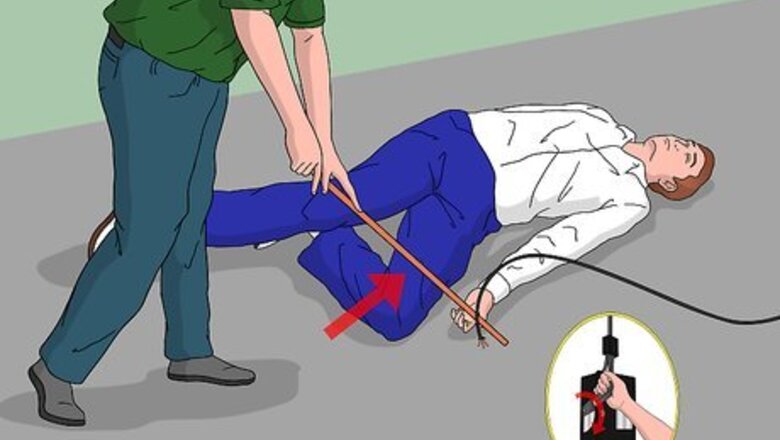
views
X
Research source
Treating Major Electrical Burns
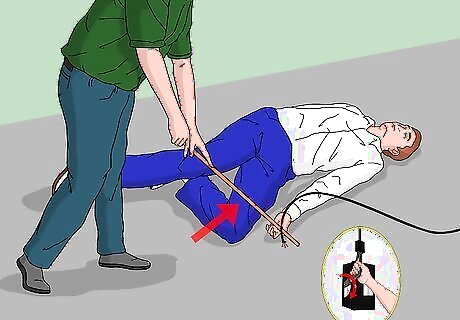
Do not touch the person if they are still in contact with the electrical current. Unplug the appliance or turn off the main power source to the house to stop the electrical flow to the victim first. If it is not immediately possible to shut off the power, stand on a dry surface—such as a rubber doormat or a pile of papers or books—and use a dry wooden object—such as a broom handle—to push the person away from the electrical source. Do not use anything wet or made of metal.
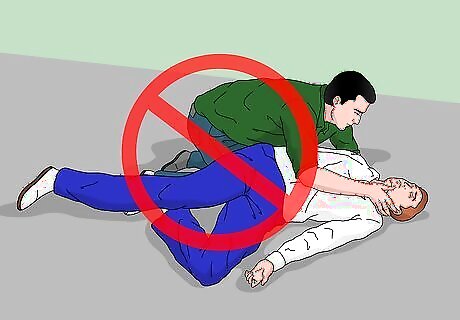
Do not move the person unless necessary. Once the person is no longer in contact with the electrical current, try not to move them unless completely necessary.
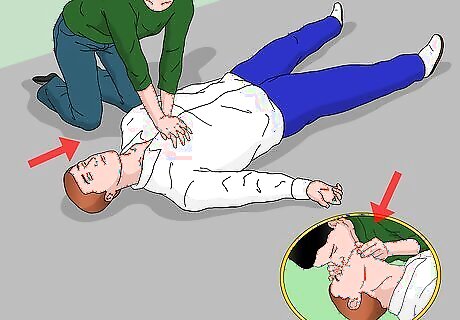
Check to see if the person responds. The victim may be unconscious or otherwise unresponsive to touch or when spoken to. If the person is not breathing, perform rescue breathing and CPR.
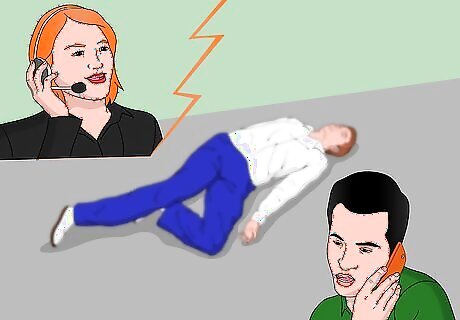
Call for immediate medical assistance. Electrical burns can have an effect on the electrical activity of the heart. Call 911 or another emergency response number, especially if the person is unresponsive or if the burn is from a high-voltage wire or from a lightning strike. If the heart has stopped, you will need to administer CPR. Even if the victim is conscious, you should call 911 if they have severe burns, a fast heartbeat, heart arrhythmia/cardiac arrest, a seizure, problems walking or keeping balance, trouble seeing or hearing, red or reddish black urine, confusion, muscle pain and contractions, or difficulty breathing. Be aware that the person may also have kidney damage or damage to the nervous system or bones.
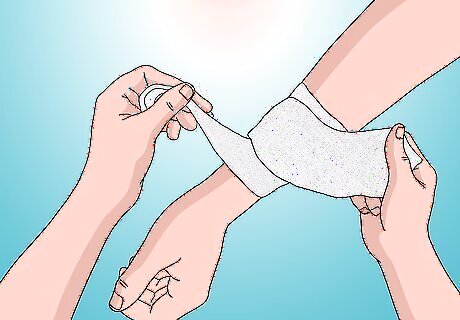
Treat the burned area(s) while waiting for medical assistance to arrive. Cover the burns with a dry, sterile gauze bandage. For severe burns, do not attempt to remove pieces of clothing that have stuck to the skin. However, you can cut away loose clothing near the area of the burn, especially if the clothing encircles the area and can become problematic if the area swells. Do not attempt to cool the burn. Do not use a blanket or towel to cover the burns because the loose fibers can stick to the burn surface. Do not apply grease or oil to the burns.
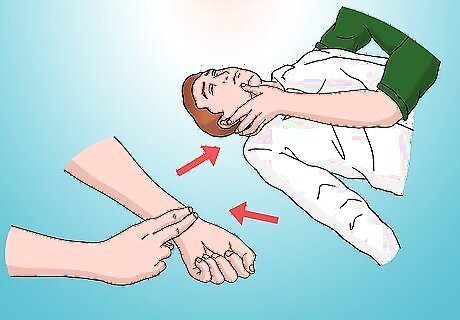
Check the victim for symptoms of shock. They may be cold, have clammy skin, a pale appearance, and/or a rapid pulse. Track any of these symptoms to tell the emergency responders when they arrive.
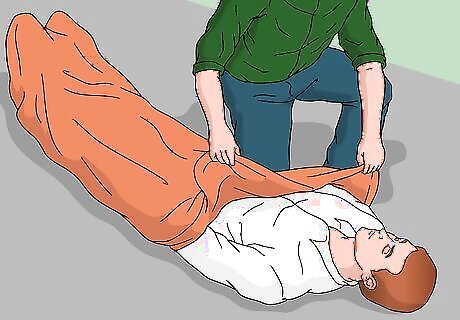
Keep the victim warm. Try to prevent the injured person from becoming chilled, which can worsen the shock symptoms. If using a blanket, keep it off the affected areas while waiting for paramedics to arrive.
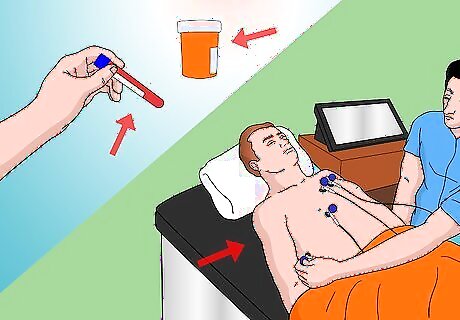
Follow all doctor’s orders. Depending on the severity of the shock and the burns, the ER doctor and nursing team will have a wide variety of possible tests and treatment options. They will likely order blood and urine tests to check for damage to your muscles, heart, and other organs. An ECG (or EKG) will record the electrical activity in your heart to ensure that the shock hasn’t caused any arrhythmia. For serious burns, medical staff may take a scintigraphy, which helps find dead tissue that may need to be removed.
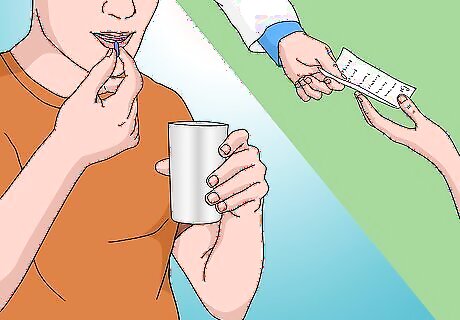
Follow prescribed treatments. The doctor is likely to prescribe medication for pain management as burns can be painful while healing. You will likely receive a prescription for antibiotic creams or ointments as well to apply as directed when changing bandages on the affected area.
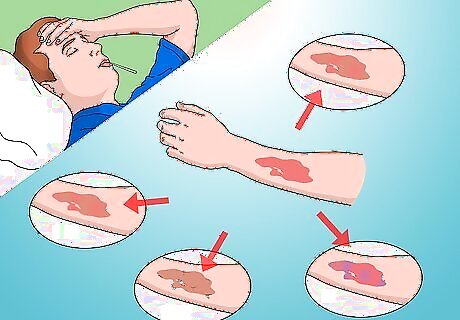
Watch for signs of infection. The prescribed treatment will likely include antibiotics in order to keep the burns from becoming infected. However, you should still watch for signs of infection and see your doctor immediately if you believe the wound has gotten infected. Your doctor will prescribe a more aggressive antibiotic if this is the case. Potential signs include: Change in color of the burnt area or surrounding skin Purplish discoloration, particularly if swelling is also present Change in thickness of the burn (the burn suddenly extends deep into the skin) Greenish discharge or pus Fever
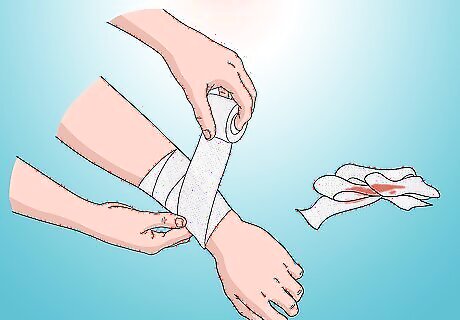
Change the bandages often. Any time the bandages become wet or soiled, change them. Clean the burn (using clean or gloved hands) with water and a mild soap, apply more antibiotic ointment (if instructed to do so by your doctor), and rewrap with a new, sterile piece of nonstick gauze.
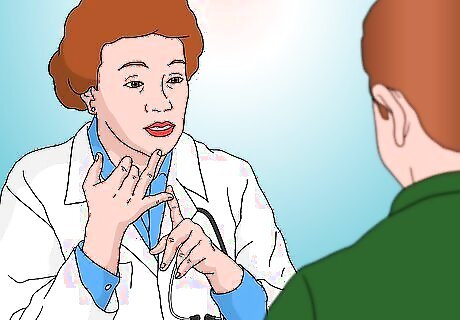
Discuss surgical options with your doctor for severe burns. For severe third-degree burns, doctors may recommend a number of surgical options depending upon the size and location of the burn. Some of these options include: Debridement or the removal of dead or highly damaged tissue to prevent infection, inflammation, and to improve healing time Skin grafts or flaps, which is the process for replacing lost skin with healthy skin from other sites to help assist in healing and prevent infection. Escharotomy, which is an incision made in dead tissue to the fat layers below and can improve blood flow as well as relieving pain from pressure caused by swelling. Fasciotomy, or the release of pressure caused by swollen muscles associated with the burn, which can help decrease damage to nerves, tissue, or organs.
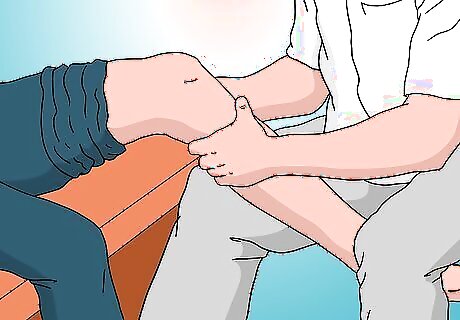
Discuss physical therapy options if necessary. Potential muscle and joint damage associated with severe burns can lead to decreased function. By seeing a physical therapist, you can rebuild strength in the affected areas, increasing mobility and decreasing pain associated with certain movements.
Treating Minor Electrical Burns
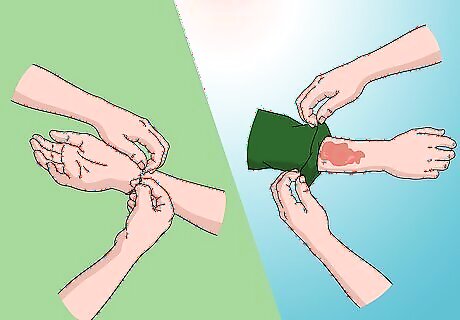
Remove clothing or jewelry at the site of the burn. Even minor burns can produce some uncomfortable swelling, so immediately remove any clothing or jewelry near the burn that can make the site even more uncomfortable. If clothing is stuck to the burn, then this is not a minor burn, and you should seek immediate medical care. Do not try to remove clothing stuck to a burn. Instead, cut around the stuck portion to remove only the loose areas.
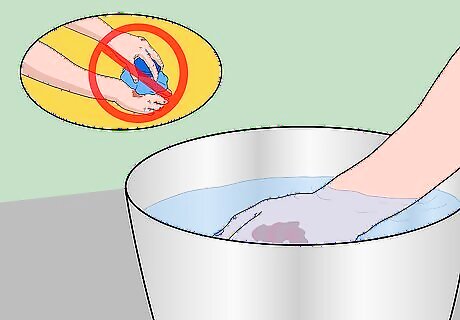
Rinse the burned area under cool water until the pain stops. The cool water will lower the skin temperature and can even potentially stop the burn from becoming more serious. Hold the burned area under cold, running water, or soak it for about 10 minutes. Don’t panic if the cool water doesn’t immediately stop the pain: it can take up to thirty minutes. Do not ever use ice or ice water because the colder temperature can lead to additional tissue damage. You can place arms, hands, feet, and legs into a basin of cool water, but you should use a cool compress for burns to the face or body.
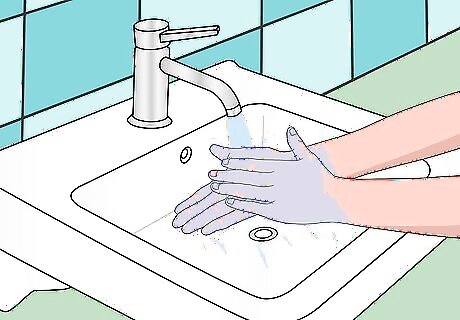
Wash your hands. You will need to clean the burn to reduce the risk of infection. However, it’s very important to thoroughly wash your hands before handling the burn at all because any open blisters can easily become infected. This also includes using only clean cloths, gauze, gloves, or anything else you might use when handling the burn.
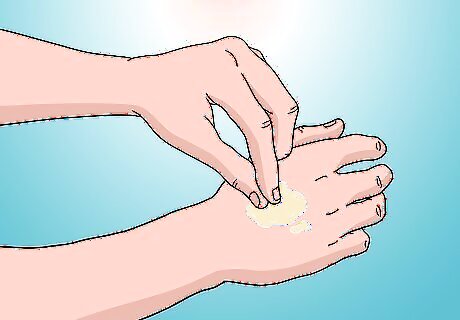
Do not break any blisters. Burn blisters are not like minor friction blisters, where breaking them can help reduce pain. Do not break any blisters associated with the burn; doing so can greatly increase the potential for infection.
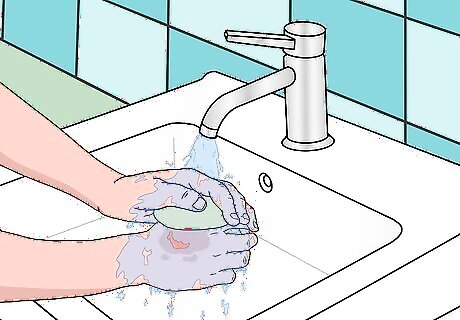
Wash the burn site. Use a cold soap and cool water to clean the burned area. Lather the soap gently so as not to risk breaking any blisters or irritating the skin. Some of the burned skin might come off as you wash the area.
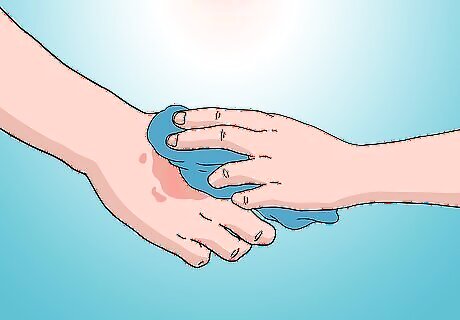
Pat the area dry. Use only a clean cloth to pat the area dry. Do not scrub at the area with the cloth. Sterile gauze is an even better option if you have it available. For extremely minor first-degree burns, this may be all the care you need to provide to the area.
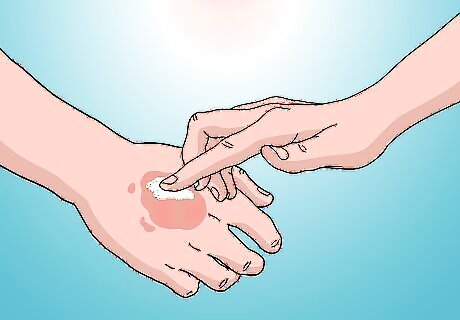
Apply an antibiotic ointment. You can use ointments such as Bacitracin or Polysporin each time you clean the burn. Do not put sprays or butter on burns because they trap heat inside the burn. You can also apply pure aloe gel to help alleviate inflammation and soothe any burning sensations.
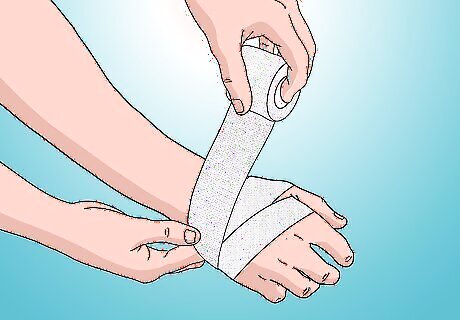
Apply a bandage. Loosely cover the burned skin with a clean bandage. Change the bandage every time it gets wet or soiled in order to avoid infection. Avoid wrapping the area too tightly, or you might risk doing further damage to the burn. If the burned skin or blisters have not broken open, then the area may not require a bandage. However, wrap the area regardless if it’s in a location prone to getting dirty or that could become irritated by clothing. Do not tape a bandage so that it circles a hand, arm, or leg. This can cause swelling.
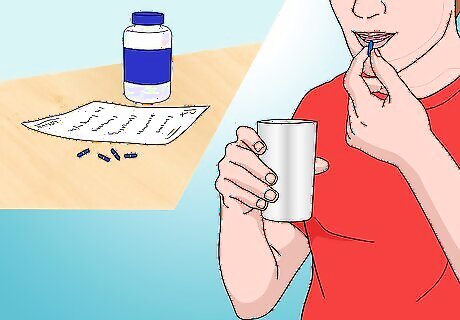
Take over-the-counter pain relievers. Acetaminophen or ibuprofen can help soothe minor pain symptoms. Take only as directed.
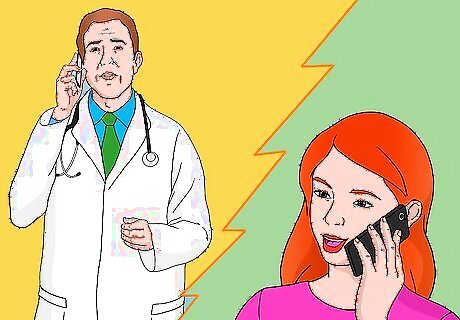
Consider contacting your doctor. Even with electrical burns that appear to be minor, you can develop symptoms that warrant a trip to your doctor. Contact your caregiver if you: Feel dizzy or weak Have stiff joints or muscle pain Experience confusion or memory loss Have questions or concerns about your condition or care
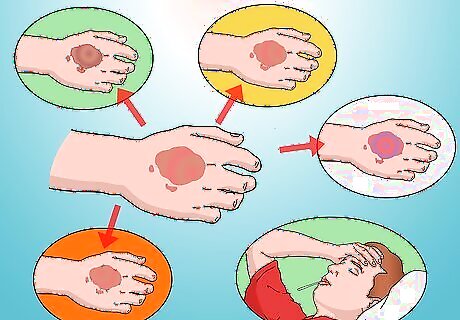
Watch for signs of infection. Infection is a minor risk for first-degree burns. However, you should always keep an eye on the burn and watch for signs of infection, especially when any blisters or broken skin are present. See your doctor immediately for prescription antibiotics if you believe your burn is infected. Potential signs include: Change in color of the burnt area or surrounding skin Purplish discoloration, particularly if swelling is also present Change in thickness of the burn (the burn suddenly extends deep into the skin) Greenish discharge or pus Fever
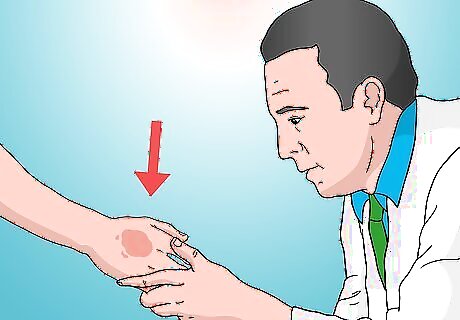
Have a doctor look at large blisters. If any large blisters develop from your burn, you should have them removed by a doctor. They will rarely remain intact, and it’s better to have a doctor remove them taking all of the necessary, sterile precautions. A large blister is roughly anything larger than your pinky fingernail.
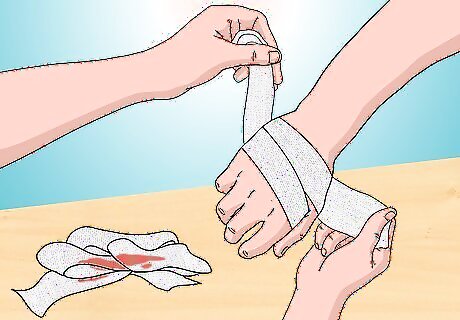
Change the bandages often. Any time the bandages become wet or soiled, change them. Clean the burn (using clean hands or gloves) with water and a mild soap, apply more antibiotic ointment, and rewrap with a new, sterile piece of nonstick gauze.














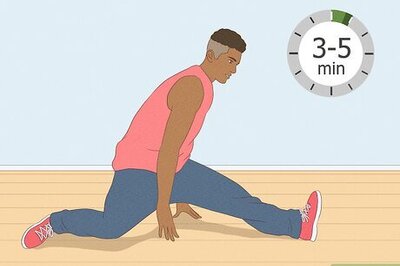



Comments
0 comment